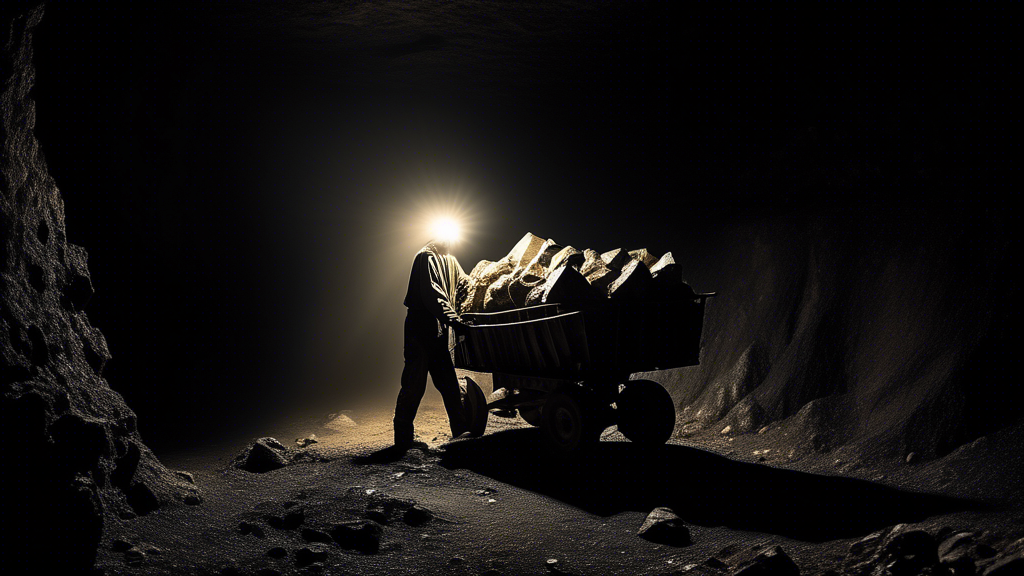Table of Contents Show
Current State of Uranium Mining in the USA
The United States holds a significant position in the global uranium landscape, boasting substantial reserves and a history of production. However, the industry has faced challenges in recent years, leading to a decline in domestic uranium mining. As of 2023, only a few operational uranium mines remain within the country. The majority of uranium required for nuclear power generation is imported from countries like Canada, Kazakhstan, and Australia.
Factors Influencing US Uranium Mining
Several factors have contributed to the complex situation of uranium mining in the USA:
- Low Uranium Prices: A prolonged period of low uranium prices has made domestic mining economically challenging, as production costs often exceed market values.
- Competition from Imports: The availability of cheaper uranium from international sources has further strained the domestic industry.
- Environmental Concerns: Uranium mining, like any extractive industry, raises environmental concerns related to land disturbance, water usage, and potential contamination. Stringent regulations and permitting processes add to the complexity.
- Public Perception: Public perception of nuclear power and uranium mining remains a crucial factor. Concerns about safety and waste disposal contribute to the challenges faced by the industry.
Key Uranium Mining Locations in the USA
Despite the challenges, some uranium mining activities persist in specific regions of the United States:
- Wyoming: The state of Wyoming historically has been a major uranium producer, with the Smith Ranch-Highland mine being a notable operation.
- Nebraska: Nebraska also holds uranium resources, and the Crow Butte mine has been a significant source of uranium production.
- Utah: Utah possesses uranium deposits, and the White Mesa Mill plays a role in processing uranium ore.
- Texas: While not a major producer, Texas has some uranium resources and past mining activities.
Future Prospects of US Uranium Mining
The future of uranium mining in the USA remains uncertain. Several factors could potentially influence its trajectory:
- Uranium Prices: A substantial increase in uranium prices could incentivize the reopening or development of domestic mines.
- Energy Security: Growing concerns about energy security and dependence on foreign sources of uranium may lead to renewed interest in domestic production.
- Technological Advancements: Innovations in mining and processing technologies could potentially improve the economic viability and environmental sustainability of uranium extraction.
- Policy Decisions: Government policies and regulations will play a crucial role in shaping the future of the industry. Incentives, streamlined permitting processes, and support for research and development could foster growth.
Environmental Considerations in US Uranium Mining
Uranium mining, like all mining activities, carries inherent environmental risks. Responsible practices and stringent regulations are essential to mitigate these risks and ensure the long-term sustainability of the industry.
Key Environmental Concerns
- Land Disturbance: Mining operations can lead to habitat loss, soil erosion, and alterations in land use patterns.
- Water Usage and Contamination: Uranium mining requires water for various processes, potentially impacting local water resources. Contamination from mining activities can pose risks to water quality.
- Radioactive Waste Management: Proper management of radioactive waste generated during mining and processing is crucial to prevent environmental contamination and protect public health.
- Air Quality: Dust and radon emissions from mining operations can impact air quality, requiring appropriate control measures.
Mitigation Strategies and Regulations
To address environmental concerns, the uranium mining industry in the USA operates under a comprehensive regulatory framework. Key aspects include:
- Environmental Impact Assessments: Thorough assessments are conducted to evaluate potential environmental impacts before mining activities commence.
- Permitting Processes: Stringent permitting processes ensure that mining operations meet environmental standards and regulations.
- Reclamation and Restoration: Mining companies are responsible for reclaiming and restoring mined lands to minimize long-term environmental impacts.
- Waste Management Regulations: Strict regulations govern the handling, storage, and disposal of radioactive waste.
- Monitoring and Enforcement: Regulatory agencies monitor mining operations to ensure compliance with environmental regulations.
Economic Significance of US Uranium Mining
While the economic impact of uranium mining in the USA has diminished in recent years, the industry still holds potential significance:
- Job Creation: Uranium mining operations, directly and indirectly, create employment opportunities in mining, processing, transportation, and related sectors.
- Revenue Generation: Uranium production contributes to local and state economies through taxes, royalties, and economic activity.
- Energy Security: Domestic uranium production can contribute to energy independence and reduce reliance on foreign sources of fuel for nuclear power plants.
- Supply Chain Stability: A viable domestic uranium mining industry can enhance the stability of the nuclear fuel supply chain.










